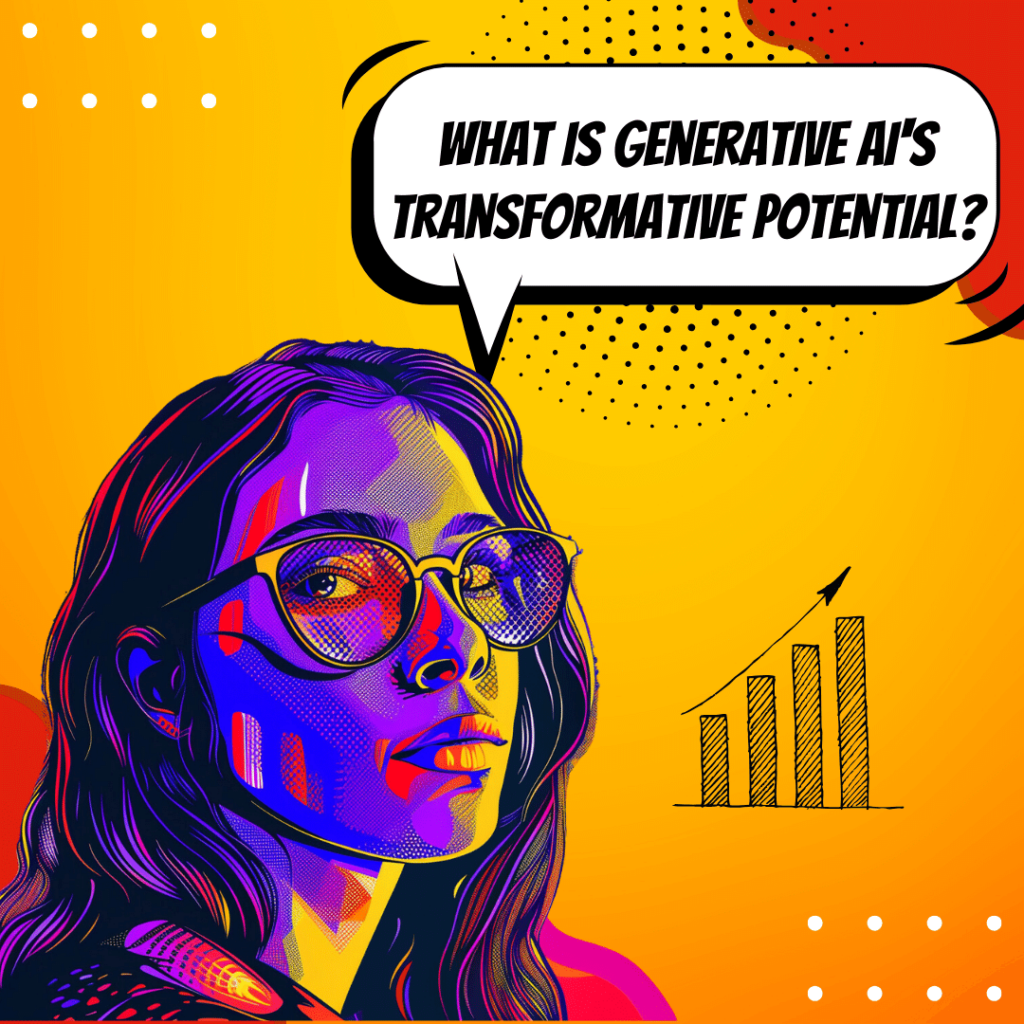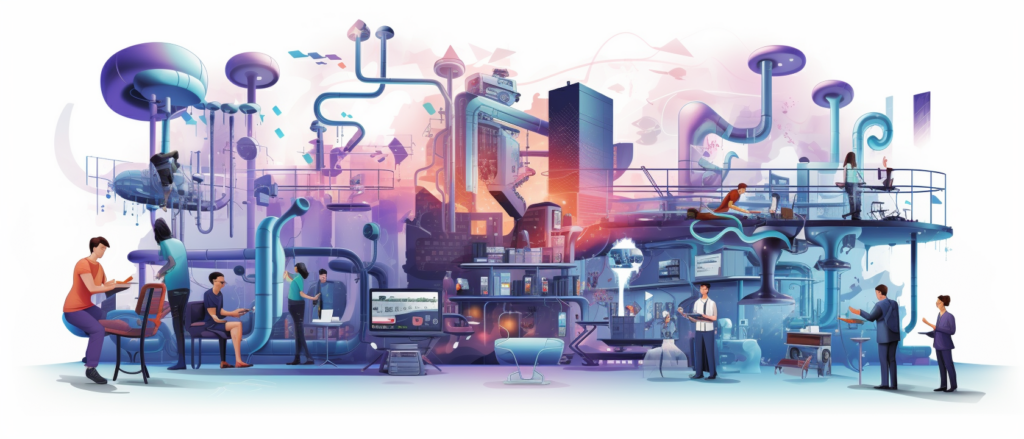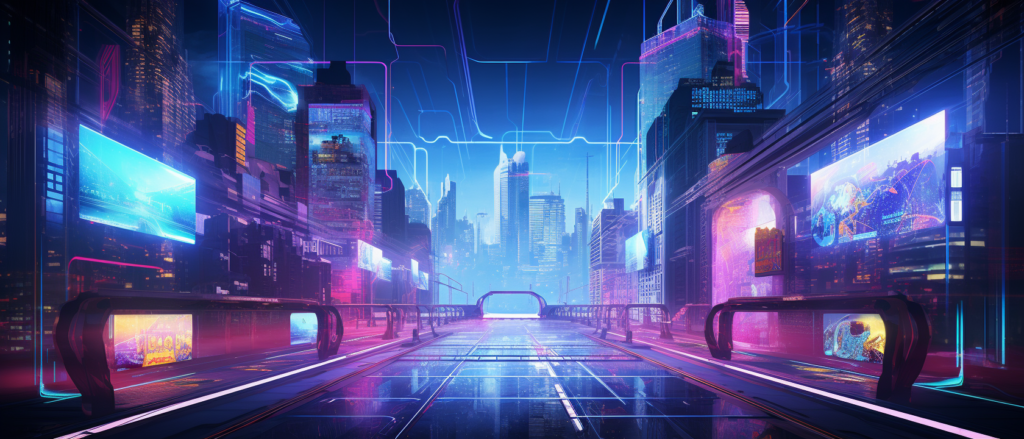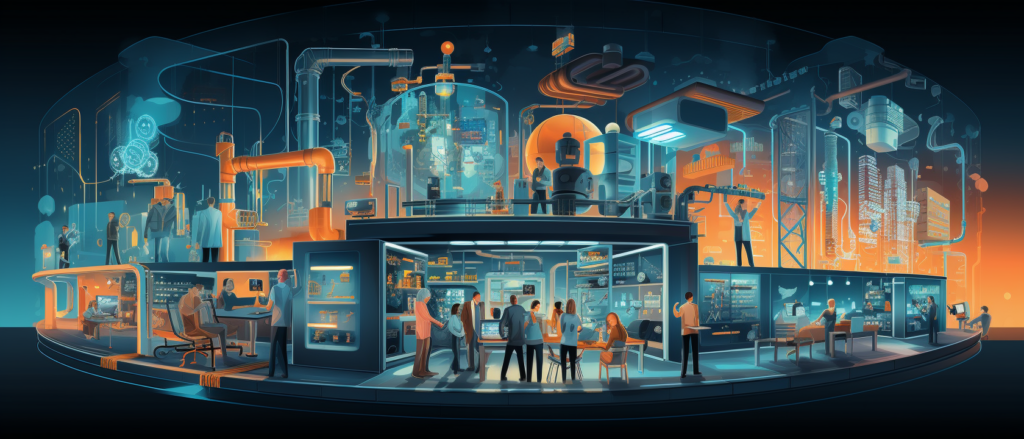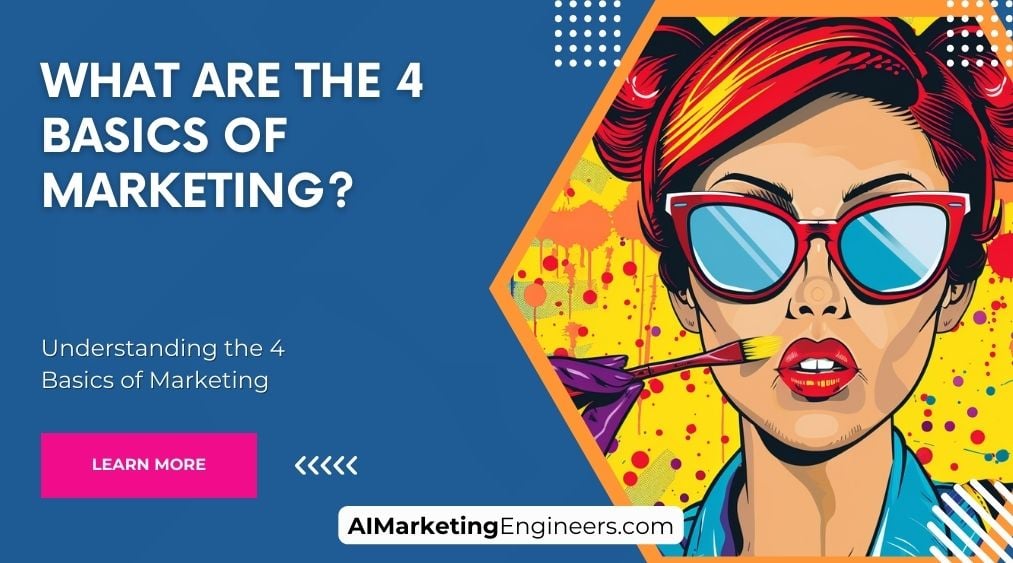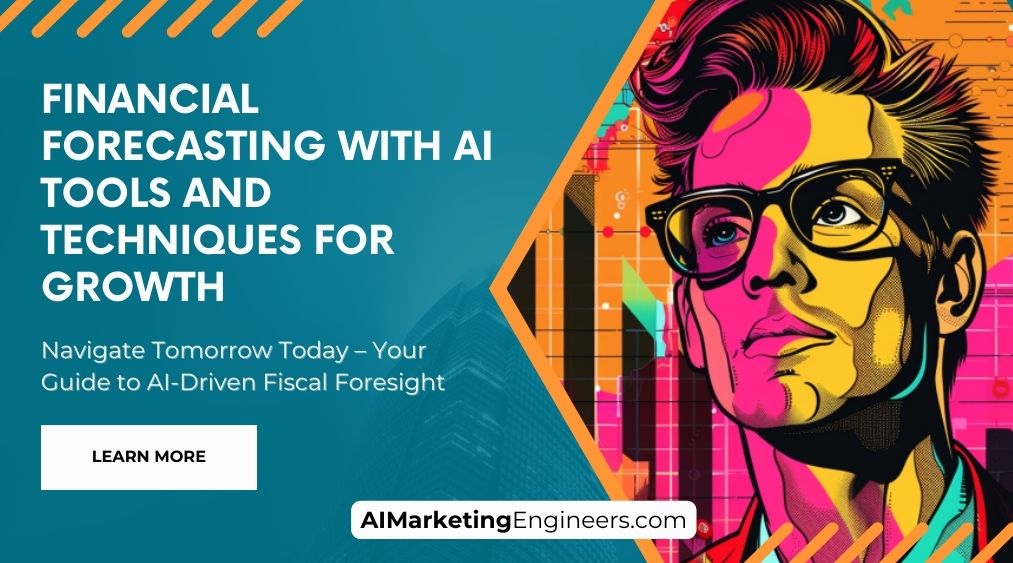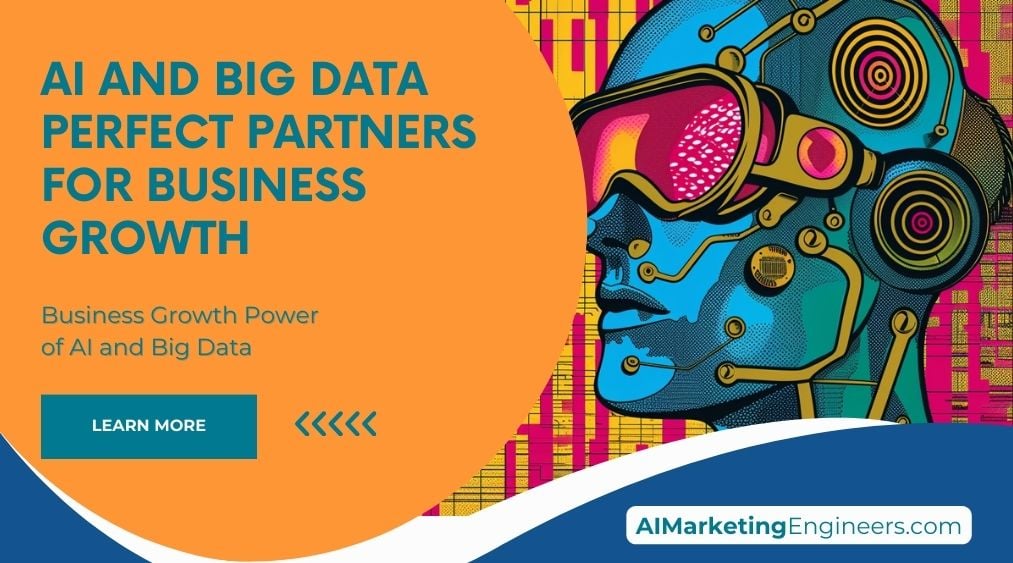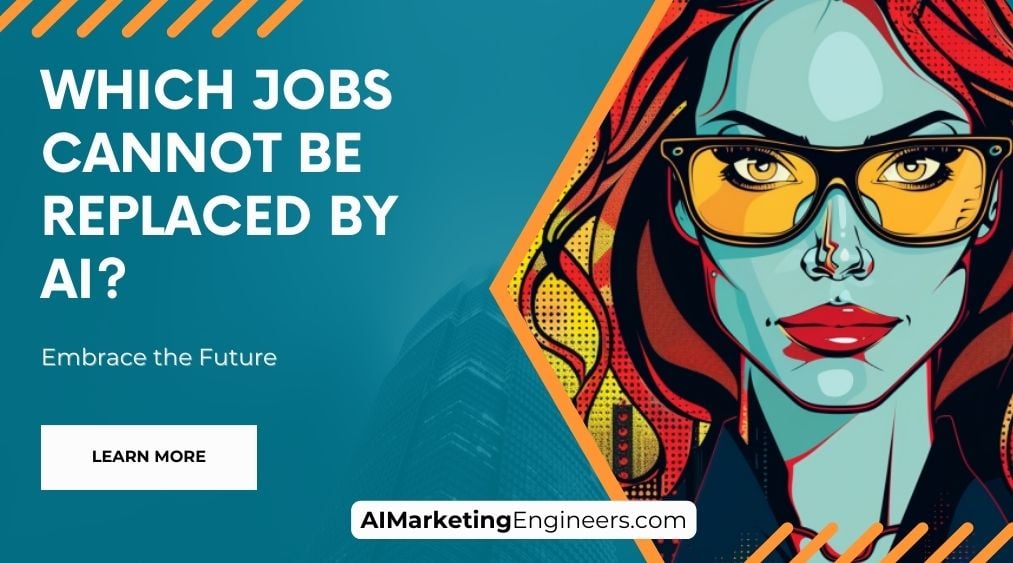Key Takeaways
✅ Significance of Generative AI: Generative AI stands as a powerful tool in the realm of technology, with limitless potential to innovate and transform across multiple industries.
✅ Unique Attributes: Unlike conventional AI, generative AI is distinctive for its capability to create new, original content rather than merely analyzing existing information.
✅ Diverse Applications: Cross-industry applications are profound, particularly notable in healthcare for advancing treatment personalization, in finance for evolving automation and risk assessment, and in media for pioneering content creation.
Introduction
In an era where artificial intelligence is not just augmenting but actively shaping our reality, 'generative AI' emerges as a powerful catalyst for innovation and transformation. Imagine a world where AI can not only analyze data but create new content—generative AI is the key that unlocks this space of endless possibilities.
From devising groundbreaking drugs to composing symphonies that would make maestros nod in approval, generative AI does it all. But what exactly is this technology that’s making waves across various sectors?
What is Generative AI
Generative AI refers to a subset of artificial intelligence technology that is focused on creating content. It can produce new, unseen data that is similar to data it has been trained on. This could be anything from images, music, and text to complex designs or patterns. The critical aspect that distinguishes generative AI from other AI is its ability to generate novel outputs without direct human intervention. While discriminative AI models identify and categorize data, generative AI models create new data that share the features of training datasets.
Market Growth Statistic: The generative AI market size of USD 56.77 billion in 2020 is anticipated to expand dramatically to USD 451.45 billion by 2027, boasting a Compound Annual Growth Rate (CAGR) of 32.1% during 2021-2028.
Types of Generative AI
There are various approaches within the umbrella of generative AI, including:
1. Deep Learning-based Models:
- Generative Adversarial Networks (GANs)
- Variational Autoencoders (VAEs)
- Transformer models which, when trained on large datasets, can generate coherent text (e.g., GPT-3)
2. Models Based on Other Technologies:
- Bayesian Networks
- Evolutionary Algorithms
- Markov Models
Applications of Generative AI
Generative AI is a versatile tool across industries:
- Healthcare: Streamlining drug discovery, augmenting disease diagnosis, and tailoring treatments to individuals.
- Finance: Analyzing and generating predictive models for market trends, automating financial workflows, and enhancing customer experience with chatbots.
- Media: Composing music, scripting and editing video content, and even generating artwork and literature.
Investment Statistic:
- Venture Capital Focus: In 2020, AI startups attracted $39.5 billion in venture capital, signifying the vibrancy and promise within the generative AI field.
Generative AI in Healthcare
In the healthcare sector, generative AI is making significant strides:
- Drug Development: Accelerating the process of molecular structure analysis and potential drug candidates' discovery.
- Disease Diagnosis: Enhancing the accuracy of medical imaging interpretations to aid early and precise diagnoses.
- Personalized Treatments: Crafting customized treatment plans by analyzing individual patient data.
Healthcare Statistic:
- As of 2021, healthcare continues to be one of the thriving fields for generative AI application and has seen substantial investment and technological advancements.
Generative AI in Finance
Generative AI's use in finance includes:
- Task Automation: Executing repetitive tasks such as data entry, report generation, and compliance checks with greater efficiency with the help of AI marketing automation.
- Risk Management: Developing predictive models that help in a more sophisticated understanding and management of financial risks.
Adoption Statistic:
- Major corporations like NVIDIA, Google, Adobe, and Autodesk are investing in generative AI capabilities for applications that range from content creation to transactional analysis.
Generative AI in Media
Generative AI's utilization in the media industry encompasses:
- Content Creation: Crafting original articles, composing music and lyrics, and even plotting and scripting films.
- Art Production: Enabling the generation of visual art that ranges from digital paintings to advanced 3D modeling.
Research Statistic:
- Research into generative AI has been expanding at a fast pace, including phenomenal advances in natural language processing, image generation, and predicting protein structures which are pivotal for drug design.
Challenges and Limitations
Some hurdles faced by generative AI include:
- Bias and Ethical Considerations: AI models can inadvertently perpetuate biases present in their training data, an issue which is discussed in depth concerning AI ethics in marketing.
- Data Dependencies: The quality of generated content heavily relies on the volume and quality of the training data.
- Authenticity Concerns: Distinguishing AI-generated content from human-generated content has legal and ethical implications.
Future Developments
Generative AI holds an immense potential for the future:
- It could generate substantial changes in creative fields, empowering artists and designers.
- New business models could emerge, grounded on personalized and automated content generation.
- Enhanced predictive modeling could transform scientific research, material science, and many other fields.
Industry Evolution: The continued investment and research in generative AI suggest robust growth and widespread adoption across sectors.
Please note, the statistics and market trends mentioned are dynamically changing, and for the most up-to-date information, accessing recent industry reports and scholarly articles is recommended.
AI Marketing Engineers Recommendation
As marketing and analytics experts, we are at an exciting crossroad with the advent of generative AI technologies. These artificial intelligence systems are capable of creating content that is increasingly indistinguishable from that produced by humans. Leveraging generative AI in marketing strategies can lead to significant enhancements in creativity, personalization, and efficiency.
1. Creative Content Generation: Generative AI can craft unique visual images, write copy, or compose music. When utilized alongside human creativity, this can lead to a tremendous increase in the diversity and speed of content creation. For instance, brands can develop more variations of digital ads or personalize creative elements at scale.
2. Personalization at Scale: One of the strongest advantages of generative AI is the ability to personalize content for individual users at an unprecedented scale. By analyzing customer data, these AI systems can generate product recommendations, targeted emails, and even personalized storytelling that resonates with the consumer’s unique preferences and behaviors.
3. Efficiency and Cost-Effectiveness: The automation capabilities of generative AI enable marketing teams to produce high volumes of content much more rapidly than traditional methods. This not only cuts down on production time but also can lead to significant cost savings, given that the technology has the potential to tackle tasks that would normally require diverse skill sets and thus potentially reduce labor costs.
4. Continuous Learning and Improvement: Generative AI systems are inherently designed to learn and improve over time. By integrating these AI models into marketing tools and platforms, companies can benefit from continuous improvement in targeting, message optimization, and creative effectiveness as the AI learns from ongoing campaign data.
5. Data-Powered Insights: The analysis potential of AI goes beyond simple creation. With the right data, generative AI can help identify emerging trends, predict shifts in consumer behavior, and suggest timely and relevant marketing strategies. The predictive analytics generate insights that can drive strategic decisions and help companies stay ahead of the competition.
6. Ethical and Responsible Use: While there is significant promise in generative AI, it is critically important to use these technologies responsibly. One must account for bias, obtain proper data consents, ensure transparency, and consider the potential impact on employment. Marketing efforts should preserve authenticity and trust with the audience, disclosing when AI-generated content is used and ensuring it meets high ethical standards.
Implementation Strategy
To effectively integrate generative AI into marketing activities, companies should:
- Partner with AI technology providers that specialize in this field and understand the marketing context.
- Experiment with pilot projects to understand the impact and refine strategies accordingly.
- Train marketing staff to work symbiotically with AI, allowing for maximized creativity and productivity.
- Establish clear guidelines for the ethical use of AI, preserving consumer trust and complying with relevant regulations.
Conclusion
Generative AI presents groundbreaking opportunities for marketing innovation. As AI Marketing Engineers, we recommend that brands embrace this technology thoughtfully, taking full advantage of its capabilities while navigating its challenges with diligence. By adopting generative AI, marketing teams can propel their brands towards greater engagement, efficiency, and ultimately, success in an increasingly competitive marketplace.
The exploration of generative AI has shed light on its remarkable potency and the breadth of its implications across various industry sectors. Generative AI, a revolutionary technology, now stands at the forefront of artificial intelligence, propagating innovation and prompting a transformative leap in the ways we create, analyze, and automate.
We have defined generative AI as a subset of AI technologies that can generate new data that is similar but not identical to the data on which they were trained. It differentiates itself from other AI by its ability to produce novel outputs, rather than simply analyzing or classifying existing data. This capability has been enabled by deep learning-based models, such as Generative Adversarial Networks (GANs) and Variational Autoencoders (VAEs), as well as models leveraging other innovative technologies.
Industries such as healthcare, finance, and media have embraced generative AI to various extents. In healthcare, it serves as a catalyst for groundbreaking developments in drug discovery, diagnostic procedures, and treatment personalization. The finance sector has employed generative AI to revolutionize financial tasks automation and to augment the precision of risk management systems. Meanwhile, in media, it is ushering in an era where synthetic content creation, be it music, movies, or art, is becoming more commonplace and sophisticated.
However, the ascent of generative AI is not without its challenges and limitations. Issues surrounding data bias, ethical dilemmas, and the need for high-quality, robust datasets are areas that necessitate vigilance and ongoing research. As technology matures, continuously addressing these challenges will be paramount to ensure its ethical and beneficial implementation.
FAQs
Question 1: What is Generative AI?
Answer: Generative AI is a type of artificial intelligence that can generate new data or content based on existing data. It is used in various applications such as image generation, text generation, and music generation.
Question 2: How does Generative AI work?
Answer: Generative AI uses machine learning algorithms to identify patterns in data and generate new content based on those patterns. It is typically trained on large datasets and uses techniques such as deep learning to generate new output.
Question 3: What are some applications of Generative AI?
Answer: Generative AI has numerous applications across various industries, including healthcare, finance, and entertainment. Some examples include developing medical images, generating financial reports, and creating music and art.
Question 4: What are the benefits of Generative AI?
Answer: Generative AI has the potential to increase efficiency, reduce errors, and improve decision-making in various industries. It can also be used to create new and innovative content in areas such as gaming and entertainment.
Question 5: What are some challenges of Generative AI?
Answer: One of the main challenges of Generative AI is the need for large amounts of high-quality data to train the algorithms. Additionally, it can be difficult to ensure that the generated output is accurate and reliable.

